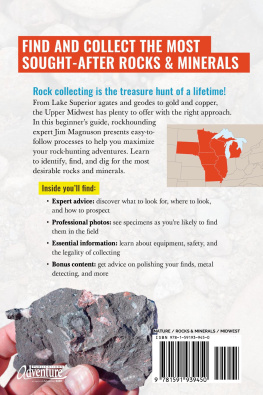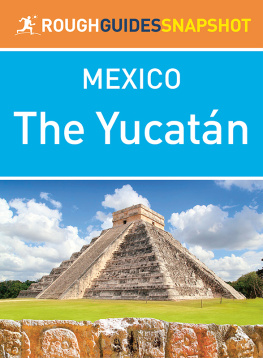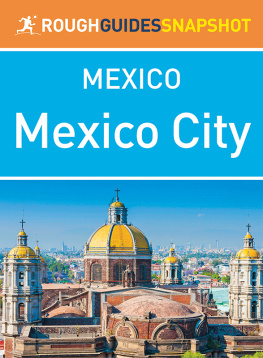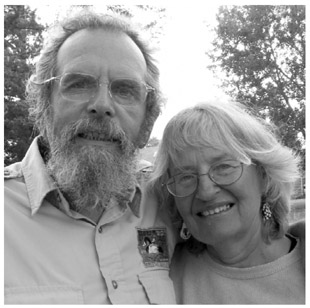About the Authors
Ruta Vaskys and Martin Freed have had a number of careers, including faculty appointments at various colleges, entrepreneurs, trapping and collecting wild herbs in Vermont and Alaska, and outdoors and conservation writers and photographers. Theyve been prospecting all of North America for the past thirty years, and for the last fifteen years theyve been collecting minerals and turn ing them into beautiful pieces of art.
Martin Freed and Ruta Vaskys
Ruta has a BS in occupational therapy and a masters in counseling. She has worked in both fields and has been a professional commercial artist. She studied at the Maryland Institute of Art and the Richmond Professional Institute, and did her graduate studies at the University of Alaska, Fairbanks. Martin has taught geology, chemistry, oceanography, and mathematics at a number of colleges and universities. He graduated from Coastal Carolina with a BS and did his graduate work at the University of Alaska in physical oceanography.
Before going to graduate school, the couple built a cabin in the Green Mountains of Vermont and lived without electricity or running water for a number of years. After graduate school, Martin and Ruta made Alaska their home. In 1988 they bought another home on the Eastern Shore of Virginia and currently split the year between the two states, taking time in the winter to travel the Southwest pursuing their rockhounding passion.
Ruta and Martin started writing about the outdoors in the mid-1980s and have had articles published in many regional and national publications, including Fur-Fish-Game, Easy Street, the Eastern Shore News, the Mid-Atlantic Fisherman, Whats Up Annapolis, Shotgun Magazine, Chesapeake Angler Magazine, Maryland Life, the Salisbury Times, Alaska, Fly Fisherman, Fish Alaska, and Game & Fish. Both are members of the Outdoor Writers Association of America (OWAA). The couples first book, Fishing Virginia, was published in 2007, and Fishing Maryland, Delaware, and Washington, D.C. was published in 2008 (both by The Lyons Press).
Ruta and Martin met on top of Mount Abraham in Vermont in 1976 and have been climbing mountains together ever since.
Acknowledgments
We would like to thank all the dedicated public servants of the Bureau of Land Management and the USDA Forest Service. These folks diligently work to keep our federal public lands open and safe. They are also very helpful if you are trying to find a particular old mine or agate area.
Appendix A: Glossary
Agate: A form of chalcedony containing bands or mossy inclusions; often very colorful, but sometimes with either one color or very muted colors.
Aggregate: A mixture of different kinds of rocks or crystals.
Alabaster: A fine-grained variety of gypsum used widely for carving.
Amethyst: A gemstone of the quartz family, ranging in color from pale lilac to deep purple.
Ammonite: A cephalopod fossil curled like a rams horn.
Apache tears: a kind of nodular obsidian (volcanic black glass). When polished, it is opaque to nearly translucent. The color ranges from red to brown to black.
Aquamarine: A form of beryl next in desirability to emerald; colors range from pale to deep blue or blue green.
Aragonite: A form of calcite that often forms in layers or bands and is sometimes mistaken for onyx.
Azurite: A blue copper carbonate often associated with malachite.
Baculite: A cephalopod fossil of the same family as the ammonite, but straight rather than curled.
Barite: Barium sulfate occurring in blue, green, brown, and red colors.
Beryl: Beryllium aluminum sulphate that is colorless in its pure form; varieties include emerald, green; aquamarine, blue; morganite, pink; and heliodor, brown to golden yellow.
Biotite: A member of the mica group usually in black, brown black, or green black.
Book: Term for a common occurrence of mica in leaves that resemble the pages of a book.
Brachiopod: A marine animal with two nearly symmetrical shells, but with one slightly larger than the other.
Cabbing: The act of creating a cabochon.
Cabochon (Cab): A common shape for a gem, usually with an elliptical perimeter and a domed top.
Calcite: Calcium carbonate that occurs in clear as well as white, brown, red, yellow, and blue crystals.
Candy rock: See picture rock.
Cephalopod: Free-swimming marine animal; ammonites and baculites are typical of cephalopods.
Chalcedony: A cryptocrystalline form of quartz in which the crystal structure is not visible to the naked eye; forms include agate, jasper, carnelian, sard, onyx, chrysoprase, sardonyx, rose, and flint.
Cleavelandite: A form of albite in the plagioclase feldspar group.
Concretion: A cemented accumulation of mineral material; may contain pyrite, silica, calcite, or gypsum.
Country rock: The common rock surrounding a vein or other deposit of gemstones or minerals.
Crinoid: One of hundreds of round stem-like echinoderms; usually only parts are found as fossils.
Crystal: A solid mineral having a regular geometric shape with flat faces or surfaces.
Dendrite: A mineral inclusion in a rock which resembles the branching of a fern.
Dike: A wall of igneous rock surrounded by country rock.
Epidote: Green crystal sometimes used as a gemstone, but more commonly collected for display.
Feldspar: The most abundant mineral in the Earths crust; classified as orthoclase and plagioclase; among the most desired varieties are moonstone, sun-stone, microcline, and labradorite.
Float: Gemstones or minerals that have been transported from their place of origin by water, erosion, or gravity.
Fluorite: A common mineral that occurs in colors of white, brown, purple, green, yellow, violet, and blue; sometimes faceted, but too soft to stand up to day-to-day wear as jewelry.
Fluorspar: A less pure and more granular form of fluorite.
Fortification agate: Agate with acutely banded corners that form a closed figure resembling a fort.
Fossils: Remains of plants, insects, or animals preserved in casts or molds.
Gad: A chisel or pointed iron or steel bar used for loosening ore or rock.
Gangue: Country rock, or other rock of no value, surrounding minerals or gemstones.
Garnet: A group of differently colored but chemically similar minerals; group includes pyrope, red with brown; almandine, red with violet; spessartite, orange to red brown; grossular, yellow to copper brown; demantoid, emerald green; and uvarovite, emerald green.
Gem: A gemstone that has been prepared for use in jewelry.
Gemstone: Any precious or semiprecious stone that can be cut and/or polished and used in jewelry.
Geode: A hollow nodule or concretion, usually filled with crystal formations.
Gypsum: A hydrous calcium sulphate that occurs in white, colorless, gray, brown, red, and yellow; colorless variety is called selenite, and dense form is called alabaster.
Igneous: Rock formed by solidification or crystallization of magma; one of the three primary classifications of rock.
Jasper: Opaque form of chalcedony, often with mossy inclusions or intertwining of various colors.
Lapidary: The art of forming and shaping gemstones; one who forms or shapes gemstones.





